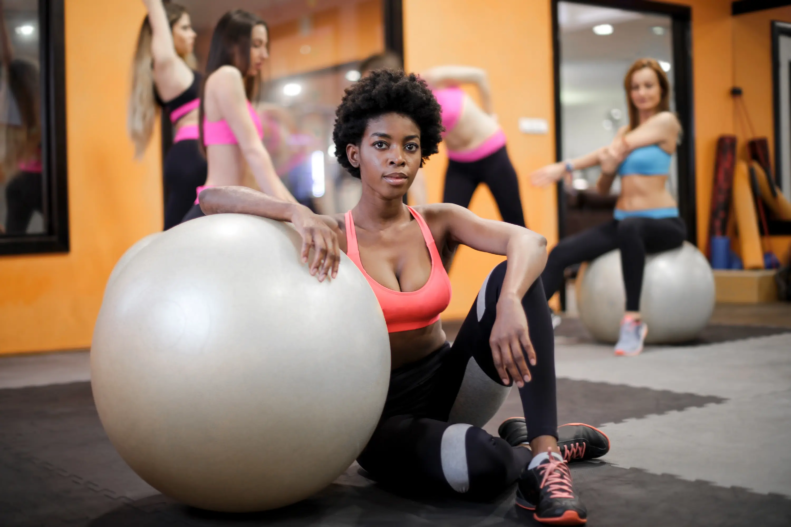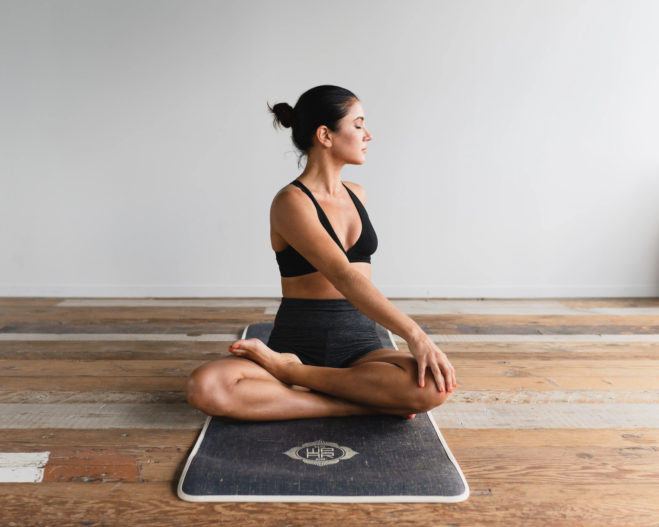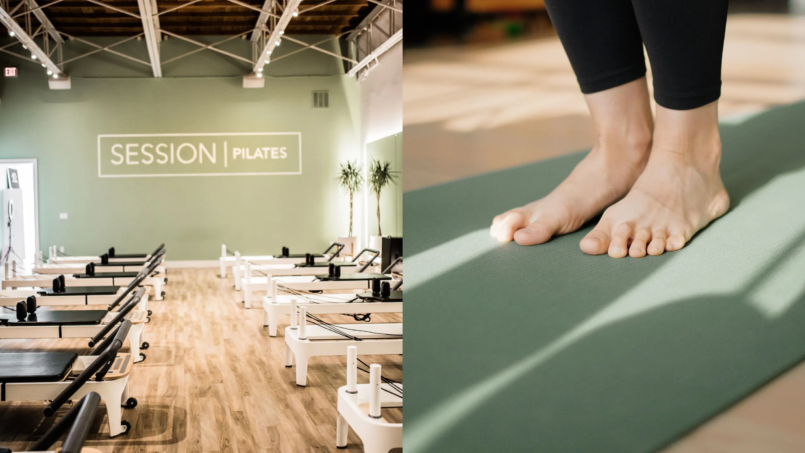Why is Pilates so Expensive? Pilates is a popular form of exercise that emphasizes the use of controlled movements to build strength, flexibility, and balance. It’s often praised for improving posture, relieving stress, and preventing injuries. However, many people are surprised by the high cost of Pilates classes and wonder why they are so expensive.
In this article, we will explore the various factors contributing to Pilates’s cost and whether the benefits are worth the price. From the cost of training and certification to the cost of equipment and studio rental, we will examine the reasons behind the high cost of Pilates and help you decide if it’s the right fit for you.
Why is Pilates so Expensive?
Pilates can be expensive for a variety of reasons, including:
- Cost of training and certification: Pilates instructors must go through extensive training and certification in order to teach classes, which can be costly.
- Cost of equipment: Pilates requires specialized equipment, such as reformers and Pilates mats, which can be expensive to purchase or rent.
- Cost of studio rental: Pilates studios need to rent space to hold classes, which can be costly, and this cost is passed onto the clients.
- Cost of marketing and advertising: Pilates studios and instructors must invest in marketing and advertising efforts to attract clients, which can be costly.
- High demand: Pilates is becoming more and more popular, and as a result, the demand for Pilates classes has increased. This can drive up the cost as studios can charge more for a product in high demand.
- Limited equipment: Pilates requires specialized equipment, such as reformers and Pilates mats, which may not be available in all gym or fitness centers, that’s why some studios charge more for the rental of the equipment.
What is Pilates?
Pilates is a form of exercise that emphasizes controlled movements to build strength, flexibility, and balance. It was developed by Joseph Pilates in the early 20th century and originally called “Contrology.” Pilates is based on the idea that a strong core, or “powerhouse,” is the foundation of a healthy body.
Pilates exercises are typically performed on specialized equipment, such as a reformer, a Cadillac, or a Wunda chair, as well as mat exercises. The exercises focus on the body’s core muscles, including the abdominal muscles, back muscles, and hips, and are designed to improve posture, balance, and overall coordination.
Pilates classes usually consist of a series of exercises that are performed in a flowing sequence. The exercises are often low-impact, making them a good option for people with joint pain or other injuries. Additionally, the focus on breathing and concentration can help reduce stress and improve overall well-being.
And it’s often used by athletes, dancers, and people looking to improve their fitness and well-being. It’s also used as a form of physical therapy to help with injuries and chronic pain.
The cost of training and certification

The cost of training and certification is one of the major factors that contribute to the high cost of Pilates. To become a Pilates instructor, fitness enthusiasts must complete a comprehensive training program and pass a certification exam. The cost of these programs can vary widely, but it is not uncommon for them to cost several thousand dollars.
The training programs typically range from a few hundred to a few thousand dollars, depending on the level of education, the institution or organization providing the training and the location of the training. The cost of certification can also vary widely, but it is generally in the range of a few hundred dollars.
In comparison to other fitness certifications, the cost of Pilates certification is on the higher end. For example, a personal training certification may cost around $500 while a yoga teacher certification may cost around $2000.
It’s important to note that these costs may also vary based on the country, region and the school or institution providing the training. Additionally, the cost of continuing education courses, which are often required to maintain certification, should also be considered.
The cost of equipment
Another factor that contributes to the high cost of Pilates is the cost of equipment. Pilates exercises are typically performed on specialized equipment such as a reformer, a Cadillac, or a Wunda chair. These machines are designed to provide resistance and support for the exercises, and they can be quite expensive to purchase or rent.
The cost of purchasing Pilates equipment can vary widely depending on the type of equipment, the brand, and the condition. A basic reformer, for example, can cost anywhere from $1000 to $3000, while a Cadillac or Wunda chair can cost several thousand dollars.
Renting equipment can also be costly, with studios charging anywhere from $50 to $100 per hour for their equipment. Additionally, when renting equipment, the user may be unable to customize it to their specific needs.
Compared to other types of fitness equipment, the cost of Pilates equipment is higher. A set of dumbbells or a yoga mat, for example, may cost only a fraction of the cost of a Pilates reformer.
The cost of studio rental
The cost of studio rental is another factor that contributes to the high cost of Pilates. Pilates classes are typically held in specialized studios that are equipped with the necessary equipment, such as reformers, Cadillacs, and Wunda chairs. These studios can be quite expensive to rent, especially in prime locations.
The cost of renting a studio for Pilates classes can vary widely depending on the location, size, and amenities of the studio. For example, a studio in a high-traffic area in a major city may cost several hundred dollars per hour to rent, while a studio in a more rural area may cost a fraction of that.
The cost of maintaining a Pilates studio can also be significant, with expenses such as utilities, insurance, and cleaning costs adding to the overall cost.
The cost of marketing and advertising

The cost of marketing and advertising is another factor that contributes to the high cost of Pilates. To attract clients and grow their business, Pilates studios and instructors must invest in marketing and advertising efforts. These efforts can include creating a website, social media advertising, print advertising, and more.
The cost of creating and maintaining a website can vary widely, but it can cost several hundred dollars or more to create a professional-looking site. Social media advertising can also be costly, with costs ranging from a few dollars per day to several hundred dollars per month, depending on the size of the audience and the length of the campaign.
Print advertising, such as flyers and brochures, can also be costly, with design, printing, and distribution expenses. Additionally, the cost of renting space for workshops, seminars, and other events that can be used for marketing and advertising also add up.
Compared to other types of fitness businesses, the cost of marketing and advertising for Pilates can be higher. A personal trainer or a yoga instructor may have lower advertising costs.
FAQ:
How much should you spend on Pilates?
The cost of Pilates can vary widely depending on a number of factors, including the location, the type of class, and the experience of the instructor. On average, a single Pilates class can cost anywhere from $20 to $50, with package deals or monthly memberships potentially reducing the overall cost.
It’s important to remember that the cost of Pilates is not just limited to the cost of the classes themselves. The cost of training and certification, equipment, studio rental, and marketing and advertising can all add up and should be considered when determining how much you should spend on Pilates.
When deciding how much to spend on Pilates, it’s important to consider your budget and your personal fitness goals. If Pilates is a priority and you can afford it, investing in higher-cost classes with certified and experienced instructors, or even private sessions, can provide you with the best results. On the other hand, if you’re looking for a more budget-friendly option, there are plenty of lower-cost Pilates classes available, such as online classes, community centers, or local parks, that can still provide you with a great workout.
Ultimately, it’s up to you to decide how much you should spend on Pilates, but it’s essential to remember that the cost should be considered along with the benefits it brings to your overall health and well-being.
Is Pilates worth the hype?
Pilates is a form of exercise that emphasizes the use of controlled movements to build strength, flexibility, and balance. It is often praised for improving posture, relieving stress, and preventing injuries. Whether or not Pilates is worth the hype depends on individual preferences and goals.
Many people find Pilates to be an effective form of exercise that helps them achieve their fitness goals. The focus on controlled movements and core strength can help improve posture, flexibility, and balance, which can in turn help prevent injuries. The exercises are also often low-impact, making them a good option for people with joint pain or other injuries.
Additionally, Pilates can be a great option for people looking for a mind-body workout, as the focus on breathing and concentration can help reduce stress and improve overall well-being.
However, Pilates may not be suitable for everyone, as the exercises can be quite intense and require a high level of coordination. Additionally, classes, equipment, and certification costs can be quite high, which may not be affordable for some people.
How can I make Pilates more affordable?
Here are a few ways to make Pilates more affordable:
- Look for community centers or parks that offer Pilates classes. These classes are often less expensive than those held at specialized Pilates studios.
- Try online Pilates classes. Many Pilates instructors and studios now offer online classes that can be done from the comfort of your own home, saving you the cost of studio rental or travel.
- Invest in a Pilates mat and a few props like resistance bands or a foam roller. You can practice Pilates at home by following along with online videos or classes.
- Look for introductory or beginner Pilates classes. These classes are often less expensive than intermediate or advanced classes, and are a great way to start learning the basics of Pilates.
- Look for package deals or monthly memberships. Many Pilates studios offer package deals or monthly memberships that can reduce the overall cost of classes.
- Consider taking private sessions. While these can be more expensive than group classes, they can be more personalized to your needs and can help you progress faster.
- Look for training programs that offer financial aid or scholarships.
Why is Pilates Reformer expensive?
Pilates Reformer is a specialized piece of equipment used in Pilates exercises, and it can be quite expensive to purchase or rent. There are several reasons why the Pilates Reformer is expensive:
- Quality materials and construction: Pilates Reformers are typically made of high-quality materials, such as wood, metal, and leather, and are built to last. This results in a higher cost of production.
- Customization: Pilates Reformers come in different sizes and with different levels of resistance, which can affect the cost. Some reformers also come with a range of accessories and attachments, which can also add to the cost.
- Brand and reputation: Pilates Reformers from reputable brands such as Gratz, Balanced Body, Peak Pilates, or Stott Pilates, can be more expensive than others. These brands have a reputation for producing high-quality equipment that is built to last.
- High demand: Pilates is becoming more and more popular, and as a result, the demand for Pilates Reformers has increased. This can drive up the cost as manufacturers can charge more for a product in high demand.
- Maintenance and repairs: Pilates Reformers require regular maintenance and repairs, which can add to the cost of owning one.
Do you lose inches with Pilates?
By targeting and strengthening the core muscles, Pilates can help people lose inches, particularly in the waist, hip, and thigh areas. Pilates exercises focus on building strength and toning the muscles, which can lead to an overall reduction in body fat and an increase in muscle mass. This can result in a reduction in inches, especially when combined with a healthy diet and regular cardio exercise.
However, it’s important to keep in mind that Pilates is not necessarily a weight loss program, and it may not produce the same results as other types of cardio or strength training. Also, the results may vary depending on the individual’s starting point, body composition, and overall diet and exercise routine.
It’s also important to keep in mind that weight loss and inch loss are not the only measurements of progress or success. Pilates can help improve overall body strength, posture, balance, flexibility, and mind-body connection, which can lead to a more active and healthy lifestyle.
How long until you see Pilates results?
The length of time it takes to see results from Pilates can vary depending on a number of factors, including the individual’s starting point, body composition, and overall diet and exercise routine. However, generally speaking, most people begin to notice changes in their body within a few weeks of starting a regular Pilates practice.
Some people may see changes in their body composition, such as a decrease in body fat or an increase in muscle mass, within a few weeks of starting Pilates. Others may notice an improvement in their posture, balance, and overall strength within the first few weeks.
It’s important to remember that Pilates is not a quick fix, and it’s not designed to produce drastic changes in a short time. To see more significant results, consistent and regular practice is required. The American Council on Exercise recommends that people should aim for at least 2-3 Pilates sessions per week, to start seeing measurable results.
Is Pilates 3 times a week enough?
Pilates 3 times a week is a good starting point for many people looking to improve their overall fitness and well-being. Doing Pilates three times a week can help you improve your core strength, flexibility, and balance, and can help you achieve your fitness goals.
However, it’s important to keep in mind that the frequency of your Pilates practice should be tailored to your individual needs and goals. Some people may find that 3 times a week is enough to see the results they want, while others may need to practice more often to see significant improvements.
It’s also recommended to combine your Pilates practice with other forms of exercise, such as cardio and strength training, to achieve a well-rounded fitness program. This will help you to burn more calories, increase your endurance, and promote overall health and well-being.
Does Pilates flatten your stomach?
Pilates can help to flatten your stomach by targeting and strengthening the core muscles. The core muscles include the abdominal muscles, back muscles, and hips, and a strong core can help to improve posture, balance, and overall coordination. When these muscles are strengthened, it can help tone the muscles and reduce body fat in the abdominal area, leading to a flatter stomach.
Additionally, Pilates exercises, such as the “hundred,” “criss-cross,” “plank,” and “double leg stretch” are specifically designed to target and strengthen the abdominal muscles. These exercises can help to tone and shape the abdominal muscles, leading to a flatter stomach.
However, it’s important to keep in mind that Pilates alone may not be enough to completely flatten the stomach. A combination of regular Pilates practice, healthy eating, and other forms of cardio and strength training is recommended to achieve a well-rounded fitness program.
Why is Pilates addictive?
Pilates can be addictive for a variety of reasons. Some of the main reasons include:
- Improved posture and balance: Pilates exercises are designed to improve posture, balance, and overall coordination, which can lead to a greater sense of self-confidence and well-being.
- Mind-body connection: Pilates is often praised for its ability to improve the mind-body connection, as the focus on breathing and concentration can help to reduce stress and improve overall well-being.
- Feeling of accomplishment: Pilates exercises can be challenging, and as you progress, you may feel a sense of accomplishment, which can be motivating and addictive.
- Low-impact: Pilates is a low-impact form of exercise, making it accessible to a wide range of people, including those with injuries or joint pain.
- Versatility: Pilates can be adapted to suit a wide range of fitness levels, allowing for progress and advancement, which can be addictive.
- Customizability: Pilates can be adapted to suit individual needs and goals, making it a versatile form of exercise that can be tailored to each person.
What are the disadvantages of Pilates?
While Pilates can offer many benefits, there are also some potential disadvantages to consider:
- Cost: Pilates classes and equipment can be expensive, especially if you’re looking to take classes at a specialized Pilates studio or purchase your own equipment.
- Injury risk: Pilates exercises require precise movements and proper form, and if not performed correctly, it can lead to injury. It’s important to find a qualified instructor who can help you learn the proper techniques and form.
- Limited cardiovascular workout: Pilates focuses primarily on strength and flexibility, and may not provide the same level of cardiovascular workout as other types of exercise such as running, cycling or swimming.
- Limited range of motion: Pilates exercises are typically low-impact and focus on a smaller range of motion, which may not be suitable for people who are looking for a more intense workout or for athletes who need to work on a full range of motion.
- Time-consuming: Pilates classes can be time-consuming, especially if you’re looking to take classes at a specialized studio.
- Limited equipment: Pilates requires specialized equipment, such as reformers and Pilates mats, which may not be available in all gym or fitness centers.
*Disclosure: We only recommend products we would use ourselves and all opinions expressed here are our own. This post may contain affiliate links that we may earn a small commission at no additional cost to you.
If you liked this blog article about the question: Why is Pilates so Expensive?, don’t forget to follow us on Pinterest so you don’t miss any more fashion and beauty news.





